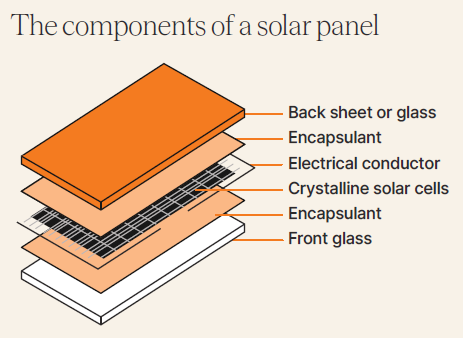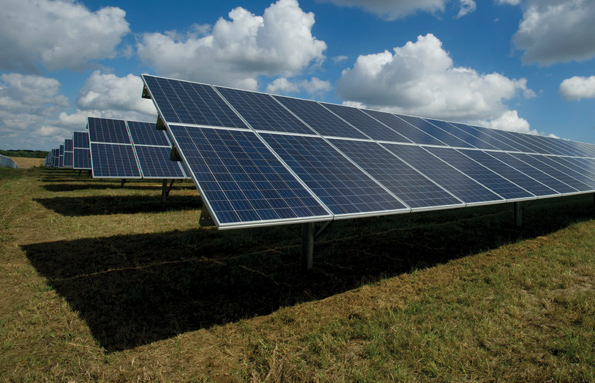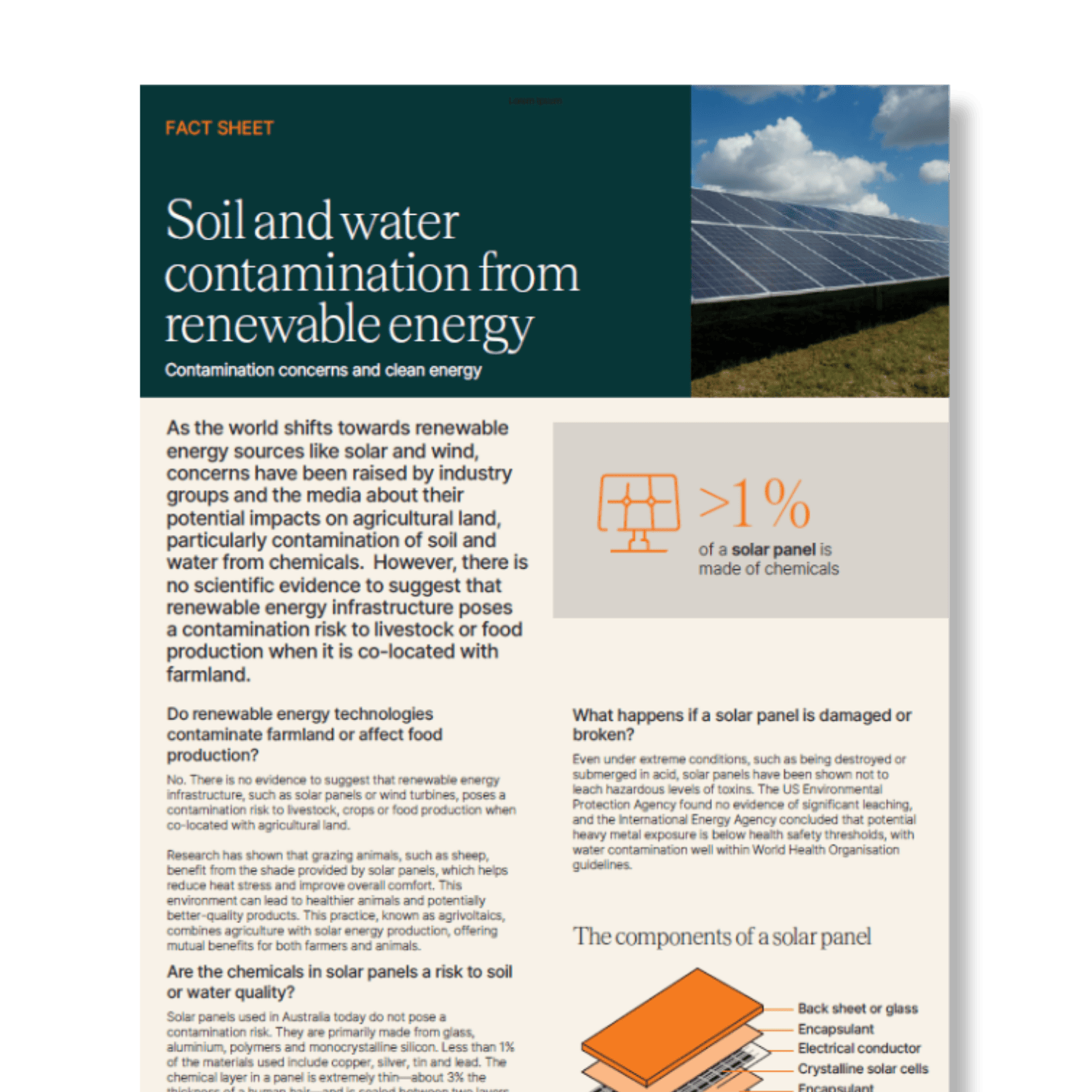As the world shifts towards renewable energy sources like solar and wind, concerns have been raised by industry groups and the media about their potential impacts on agricultural land, particularly contamination of soil and water from chemicals. However, there is no scientific evidence to suggest that renewable energy infrastructure poses a contamination risk to livestock or food production when it is co-located with farmland.
Do renewable energy technologies contaminate farmland or affect food production?
No. There is no evidence to suggest that renewable energy infrastructure, such as solar panels or wind turbines, poses a contamination risk to livestock, crops or food production when co-located with agricultural land.
Research has shown that grazing animals, such as sheep, benefit from the shade provided by solar panels, which helps reduce heat stress and improve overall comfort. This environment can lead to healthier animals and potentially better-quality products. This practice, known as agrivoltaics, combines agriculture with solar energy production, offering mutual benefits for both farmers and animals.
Are the chemicals in solar panels a risk to soil or water quality?
Solar panels used in Australia today do not pose a contamination risk. They are primarily made from glass, aluminium, polymers and monocrystalline silicon. Less than 1% of the materials used include copper, silver, tin and lead. The chemical layer in a panel is extremely thin—about 3% the thickness of a human hair—and is sealed between two layers of heat-strengthened glass with an industrial laminate. This structure prevents leaching under normal operating conditions1.
1 Jin Il Kwak, Sun-Hwa Nam, Lia Kim, and Youn-Joo An, “Potential Environmental Risk of Solar Cells: Current Knowledge and Future Challenges,” Journal of Hazardous Materials 392 (2020): 122297,https://doi.org/10.1016/j.jhazmat.2020.122297.

What happens if a solar panel is damaged or broken?
Even under extreme conditions, such as being destroyed or submerged in acid, solar panels have been shown not to leach hazardous levels of toxins. The US Environmental Protection Agency found no evidence of significant leaching, and the International Energy Agency concluded that potential heavy metal exposure is below health safety thresholds, with water contamination well within World Health Organisation guidelines.


What about the lead used in solar panels?
Some panels use small amounts (<0.1%) of lead-based solder to connect components; however, many manufacturers are transitioning toward lead-free alternatives. The lead is sealed within the panel structure and poses no risk during normal operation2.
What about when solar panels are destroyed?
There is a risk associated with the improper disposal of solar panels. About 90-95 per cent of panels commonly used in Australia, either on homes or in large-scale solar farms, can be recycled. The current challenge in Australia is a lack of facilities that recycle solar panels to maximise the amount of materials being repurposed. All solar panels have been declared hazardous e-waste in Victoria3 and have been banned from landfill, encouraging the establishment of a recycling industry in Australia4.
Do wind turbines leach oil or other chemicals into the environment?
Wind turbines are made of steel, fibreglass, and different compositions of fibres and polymers. While wind turbines contain lubricating oils and hydraulic fluids essential for their operation, the risk of oil leakage during normal operation is relatively low and is typically managed through regular maintenance.
What if a wind turbine blade is damaged?
The weight of a turbine blade can vary significantly, but typically weighs between 20 and 50 tonnes5. Turbine blades may degrade slightly over time, especially when exposed to heavy rain or hail. This wear is minor, with annual losses estimated at 30 to 540 grams per blade6. Wind turbine blades’ protective coatings are non-toxic and contain negligible amounts of bisphenol A (BPA), and the blades are specifically designed to have high weather resistance
2 Clean Energy Council. Solar Panel Toxicity. URL: https://cleanenergycouncil.org.au/for-consumers/fact-sheets/environment-and-planning-get-the-facts/solar-panels-toxicity-myth
3 Victorian Government. Managing end of life solar. URL: https://www.solar.vic.gov.au/manage-end-life-solar-pv
4 International Energy Agency. Human Health Risk Assessment Methods for PV Part 3: Module Disposal Risks. URL: Human Health Risk Assessment Methods for PV Part 3: Module Disposal Risks – IEA-PVPS
5 Verma, A.S., Yan, J., Hu, W., Jiang, Z., Shi, W. and Teuwen, J.J.E., (2023). A review of impact loads on composite wind turbine blades: Impact threats and classification. Renewable and Sustainable Energy Reviews, 178, p.113261. https://doi.org/10.1016/j.rser.2023.113261
6 Microplastics Emission from Eroding Wind Turbine Blades: Preliminary Estimations of Volume – (PDF) Microplastics Emission from Eroding Wind Turbine Blades: Preliminary Estimations of Volume
7 Jasińska, D., & Dutkiewicz, M. (2025). Waste management of wind turbine Blades—A review of recycling methods and applications in cementitious composites. Sustainability, 17(3), 805. doi: https://doi.org/10.3390/su17030805

Degradation in wind turbines is small in comparison to other sources, such as car and truck tyres, road markings, washing, paint, astroturf and car brakes.
Manufacturers are working to reduce this as blade damage impacts turbine performance and efficiency.
What happens to turbine blades at the end of their life?
Blades last approximately 18–25 years.7 Decommissioning a wind farm involves several different processes, including dismantling wind turbines and other above-ground infrastructure, removing them from the site and rehabilitating the land, or in some cases, building a new wind farm on the same site.
While 90% of a wind turbine can be recycled, the blades are difficult to dispose of due to their size and material composition. Poor disposal may lead to minor leaching of resins or microplastics, but these risks are currently considered low.
More sustainable recycling solutions are being developed as Australia’s recycling capacity expands.

